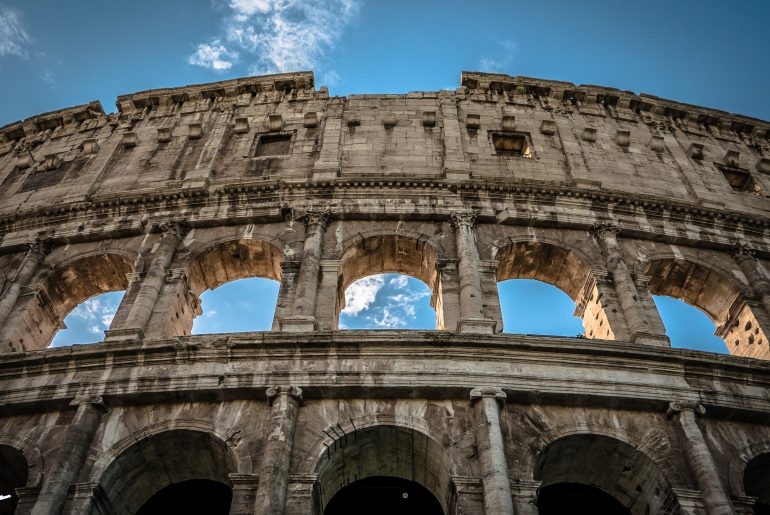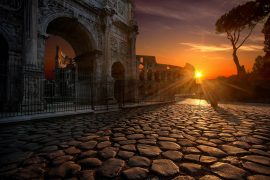Description and information
"As long as there is a Colosseum, there is also a Rome, when the Colosseum falls, Rome falls, and when Rome falls, the whole world falls," so says the prophecy of medieval scholar Bede the Venerable. For the time being, the monument is standing and doing well. The Colosseum is the largest amphitheater in the world, which owes its name not to its size, but to the 36-meter-tall statue of Nero, made of gilded bronze, once standing there, called "Colossus." Although the Colosseum has been standing for nearly 2,000 years, no other architectural structure of its kind has matched the size of the Roman one. The ancient Flavian Amphitheater is to this day a reminder of the might on the one hand and the cruelty of the Roman Empire on the other. The facility was opened in 80 A.D. as a gift, to the hungry "bread and games" inhabitants of the ancient empire. The Colosseum was a center of entertainment for the ancients, where they could watch free fights of brave gladiators, brutal hunts of dangerous animals and even naval battles (for this purpose the arena was flooded with water).
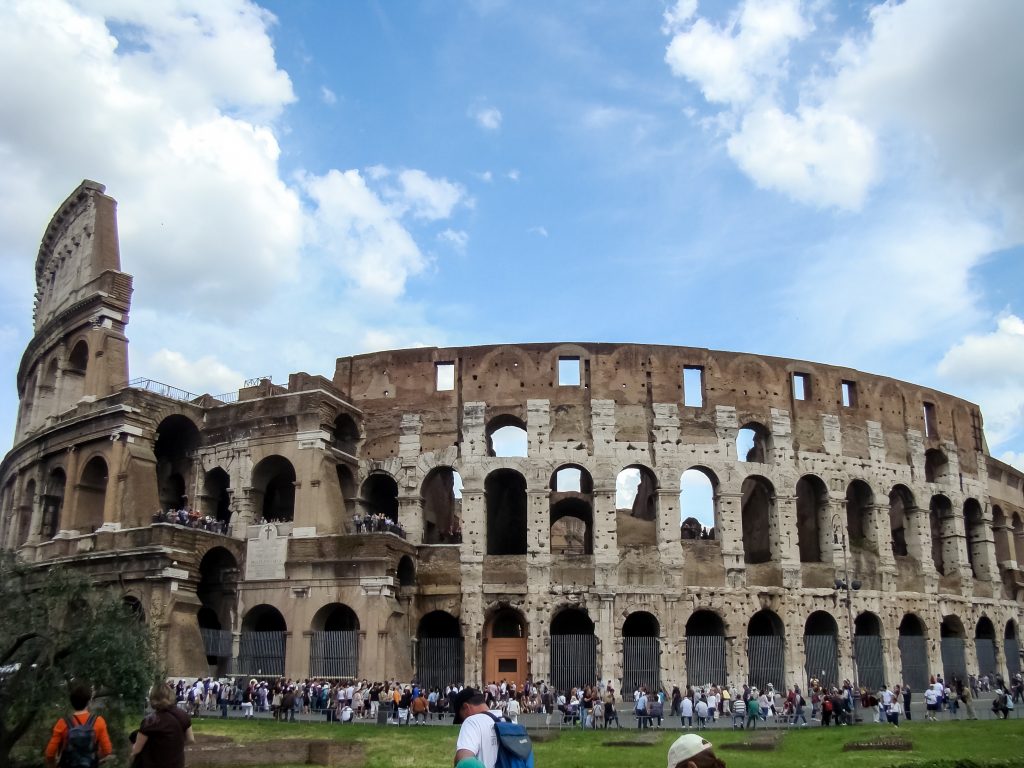
The building measured 48.5 meters in height and was built on the plan of an oval, the perimeter of which was 527 meters, and the axes forming its base were 188 and 156 meters respectively. The Colosseum is a four-story building. The first level, maintained according to the Doric order, measured 10.5 m in height. The second row of arcades is made up of Ionic-style columns, 12 m high. The third tier of columns, on the other hand, measured 11.5 m high and was erected in Corinthian order. It was crowned by a wall, decorated with small windows and Corinthian-style pilasters. Originally, bronze shields were hung on the wall and the finial had a special system of rods, for attaching a "velarium," or curtain to protect the arena from the sun or rainfall.
The grandstands could accommodate 5,000 people, with 80 numbered entrances (for efficient entry and exit of the audience). Seating in the amphitheater was done according to social class affiliation. The first rows were occupied by patricians, the second level belonged to the wealthy bourgeoisie and the third and final level belonged to the rest of Rome's citizens, the plebeians. A special place was designated for the Caesar himself and his immediate entourage, it was a vast terrace just outside the arena, called the podium.
The Roman architects thought through the ventilation systems in the building and also the layout of the stairs and corridors in an excellent way. The passageways for the crowd of spectators were spacious, allowing many to take their seats in the stands within just 10 minutes of entering the venue. In addition, underneath the arena was a wood-floored labyrinth, equipped with lifts and latches, used to allow dangerous animals into and out of the arena. In turn, the arena was lined with impermeable canvas and covered with a thick layer of sand to absorb puddles of blood.
The Roman Empire had several amphitheaters, similar to the Colosseum, providing an arena for the games. Several of them still survive today, such as those at Al-Jamm in northern Africa, at Nimes and Arles in France, and in Italy's northernmost Verona. Although two centuries have passed since the construction of the Colosseum, and the building itself has had both years of splendor and decline one thing is certain - the Colosseum still makes an electrifying impression!
History of the Colosseum
The structure known today as the Colosseum was erected as the Flavian Amphitheater. Work on the structure began in 71 A.D., commissioned by Vespasian, the commander of the Roman army who became Emperor of Rome in 69 A.D., the first of the Flavian family. The site used for the amphitheater was previously a private lake on the grounds of Nero's Domus Aurea. It is estimated that 330 tons of iron and 98,000 cubic meters of travertine rock blocks were used during the construction of the Colosseum.
An important date in the history of the Colosseum was its ceremonial opening by Titus, son of Vespasian of the Flavian family. It must be admitted that the Romans celebrated this event with great panache, as the festivities lasted 100 days and the first games consumed as many as 5,000 wild animals!
During the reign of Emperor Domitian, between '81 and '96 the construction of the Colosseum edifice was finally completed.
The year 230 marks the date of Alexander Severus' restoration of the amphitheater, while 248 marks the lavish celebration of the 1000th anniversary of the founding of Rome by Remus and Romulus.
It is estimated that the amphitheater served the Romans for about 400 years. The date of the last gladiatorial fight is believed to be 404 A.D. and the last hunt 523 A.D. The state's economic problems contributed to the abandonment of the games and the introduction of laws prohibiting bloody games in the arena.
In 442, Rome was hit by a strong earthquake that partially destroyed the edifice of the Flavian Amphitheater.
In the 13th century, under the Frangipani family, the building is turned into a fortress-like castle, and in 1312 Emperor Henry VII decides to hand over the Colosseum to the Senate and the Roman people.
The 15th and 16th centuries are an infamous period in which the ill-fated amphitheater edifice gradually falls into disrepair. During this time, stones from the Colosseum's façade are used as building material. Blocks carved from travertine during the Renaissance were used, among other things, for the construction of Roman bridges, palaces and, in part, St. Peter's Basilica.
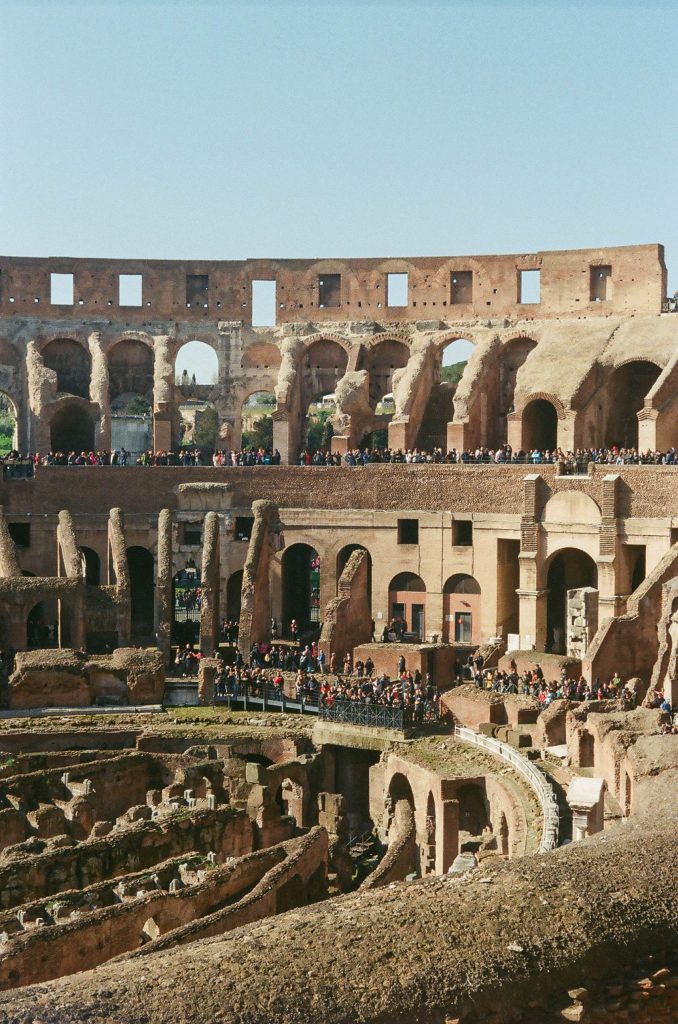
In 1744, Pope Benedict XIV placed a cross inside the Colosseum and celebrated the first Stations of the Cross (while banning the drawing of rock material from the amphitheater). Celebrated until the fall of the Ecclesiastical State in 1870, the ceremony was meant to recall how many of the first Christians died in the arena during the Roman games. Today, the traditional Roman Stations of the Cross (resumed in 1964 by Pope Paul VI), led by the governor of the Catholic Church, is held every year on Good Friday.
An interesting date in the history of the site is 1870, when vegetation is removed from the walls of the Colosseum. As the amphitheater deteriorated over the years, the ruins created conditions conducive to the growth of lush vegetation, which densely wrapped the walls of the amphitheater. Botanists studying this phenomenon counted 420 plant species in the Colosseum!
In 1980, the Colosseum was declared a UNESCO World Heritage Site.
An important date in the history of the monument is July 7, 2007, when the Colosseum made it to the list of 7 new wonders of the world, accompanied by India's Taj Mahal, the Great Wall of China, Machu Picchu in Peru, the Christ the Redeemer statue of Rio de Janeiro in Brazil, Chichen Itza in Mexico and Jordan's Petra.
Tour of the Colosseum
The scale of the Colosseum and the impression it makes on visitors is difficult to describe with even the finest words. Therefore, the best way is simply to see its walls with your own eyes, but only to enter inside the ancient arena will allow you to fully experience the history of the place. And it is worth it for every tourist who comes to the Eternal City to visit the ancient amphitheater founded by the Flavians at least once in his life. Many circuit travelers take this advice to heart. This is evidenced by the fact that every year the ancient arena is even visited by more than 6 million tourists from all over the world!
The entrance to the Colosseum is located at "Sperone Valadier", near the Arch of Constantine and the facility itself lies at Piazza del Colosseo. Using Rome's public transportation, you will reach the object by subway line B or streetcar line 3. Get off at the "Colosseo" stop. Usually quite a lot of people gather at the entrance to the facility, So it's worth paying attention to phones or wallets, as pickpockets are eager to take advantage of such "opportunities."
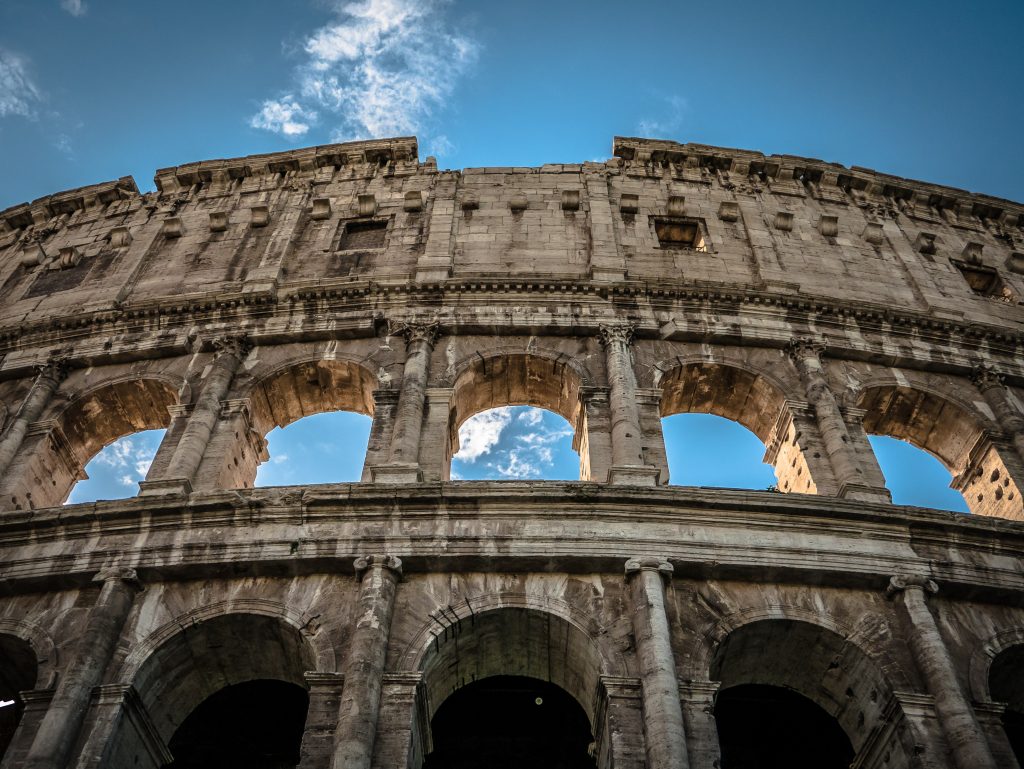
When preparing to visit the amphitheater, it is also important to remember that it is currently impossible to buy entrance tickets at the box office. Only online reservations made in advance are valid. At the entrance, the reservation and "Green Pass" (as of February 2022) are checked. Tourists also go through a security check with metal detector gates, similar to that at airports. On the list of prohibited items Among other things, there are glass containers, spray products, alcohol, suitcases and large backpacks. Please note, due to the lack of luggage storage facilities, the Colosseum staff gives you the option of discarding prohibited items or opting out of the tour. So you need to be properly prepared for the tour - take only a small backpack or purse with you. Although the Colosseum is an urban tourist attraction, it is advisable to have comfortable athletic shoes on your feet. The ground inside the facility is sometimes uneven.
Due to the monument's stature, tourists must strictly adhere to the rules in force. The slightest attempt to organize a picnic inside the edifice or littering it will most likely end in a fine.
Tours of the Colosseum can be arranged individually or in groups. Currently, groups can have a maximum of 50 people. It is worth using the group option with a guide, who will bring us the facts about the object. It is worth taking care of the guide service already at the stage of ticket reservation. Then you should buy tickets through agencies, gathering guides who speak different languages. Willing to join a group with a guide on site may end up listening to the story of the amphitheater in Italian. On the other hand, when visiting on your own, it is possible to hire an audio guide or audio-video guide.
Also keep in mind that what type of ticket you book will determine whether or not you can enter the arena and the corridors below it.
A visit to the Colosseum is sure to be memorable for a long time, prompting admiration for the might of the Roman Empire and reflection on whether bloody games were really necessary for the ancients.
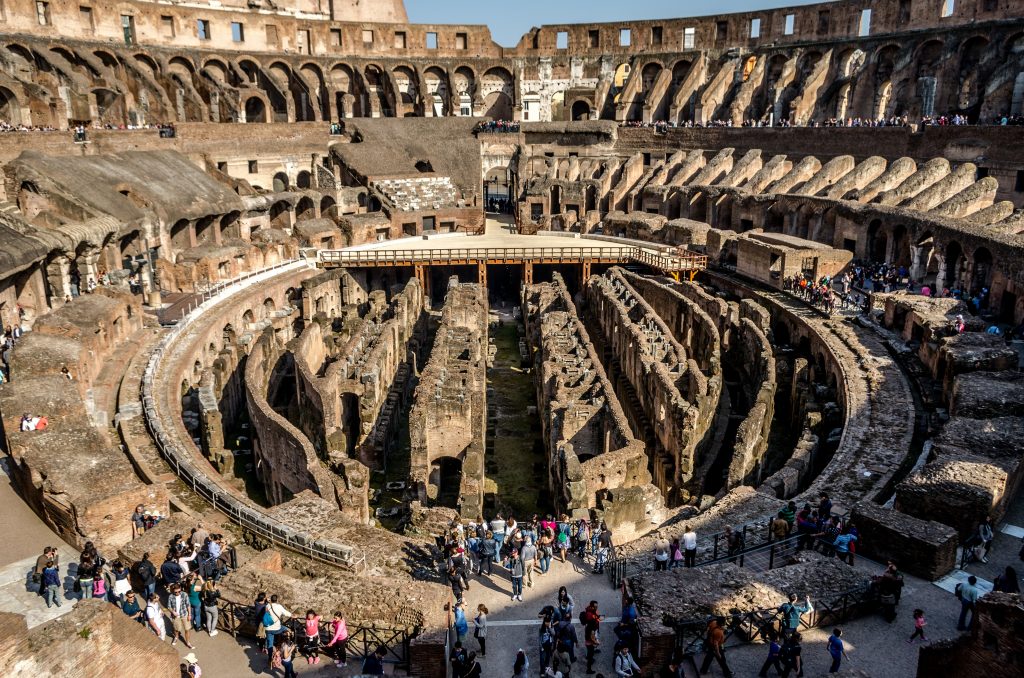
Tickets, prices and opening hours
Citizens of the Roman Empire had free admission to the games held in the Flavian Amphitheater. Today, tourists wishing to look inside the Colosseum must carry a valid ticket (showing an electronic ticket on a phone screen is sufficient). And so an adult can purchase ordinary ticket - a one-time entrance ticket priced at €16.00, which is valid for 24 hours from the first entry to the site and is also valid for the Roman Forum-Palatine archaeological complex adjacent to the Colosseum. Please note, this type of ticket does not entitle you to enter the arena and the underground.
The second option "Full experience" is a ticket valid for 48 hours, priced at EUR 22.00. The extended variant of the ticket allows, in addition to entering the Colosseum and the Roman Forum - Palatine, to visit the amphitheater arena, the underground floors (where lions and other wild animals were kept during the time of the Games) and additional facilities in the Forum - the Oratory of the Quaranta Martyrs, the Palatine Museum, the facade of the House of Augustus and the Schola Praeconum.
Discounted ticket priced at EUR 2.00 is dedicated to all citizens of the European Union between 18 and 25 years of age. It is sold upon presentation of an identity document proving age.
Free entry is a privilege that can be enjoyed by children and teenagers who have not yet reached the age of 18.
Please note, if you fall within the age category for free entry to the Colosseum, you must download a free entrance ticket! It is required for each person, even for infants!
You should always check the amphitheater's current opening hours and ticket prices at: Tickets and entry - Colosseum (il-colosseo.it). Currently until the end of February 2022. The Colosseum, as well as the neighboring Roman Forum-Palatine complex, is open to the public daily from 09:30 - 16:30.
From March 1 to March 16, 2022, the facility will be open from 09:30 - 17:30, while from March 17 to March 31, 2022, the hours will be extended 09:30 - 19:15. The differences in closing times are conditioned by the hour of sunset in Rome. It is assumed that the Colosseum is closed for one hour before the sun hides behind the horizon.
The last groups of visitors are always allowed into the facility an hour before closing.
Advance ticket reservations online are now in effect and tourists are allowed to enter the Colosseum only at the time they indicated when booking. It is recommended to show up 15 minutes before the notified time.
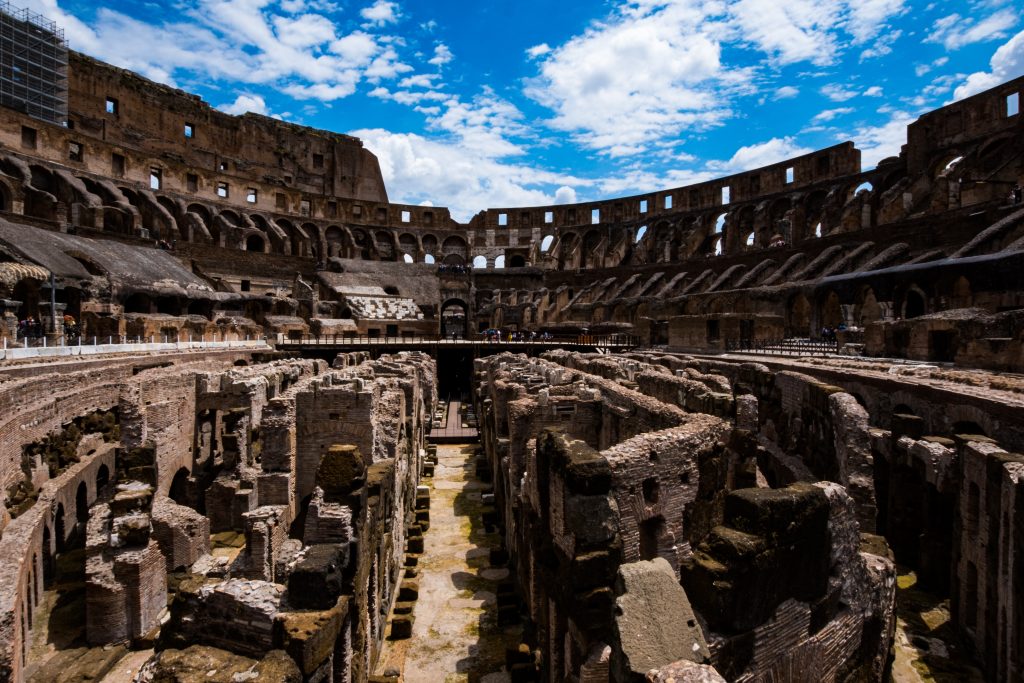
Accommodation
If you're planning to visit the Colosseum, but haven't yet booked your accommodation in Rome, below you'll find the best map with accommodation from booking.com:
Booking.com
